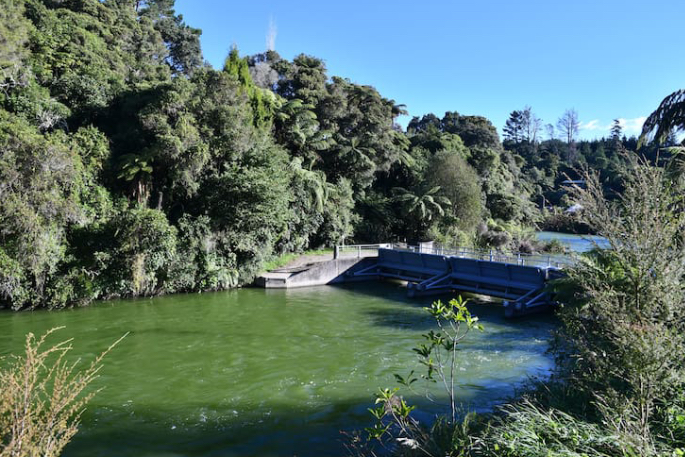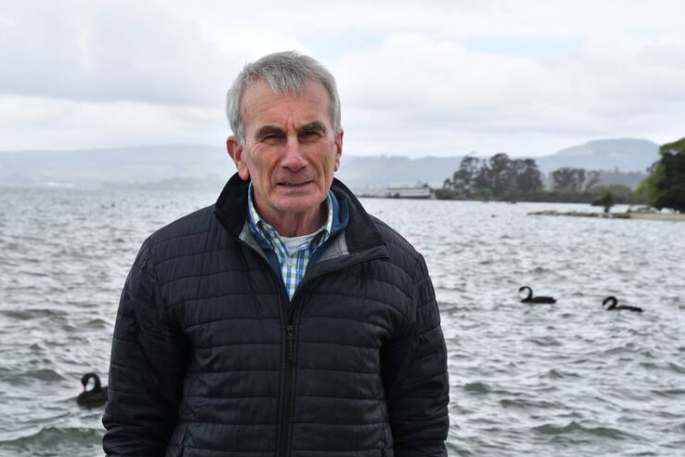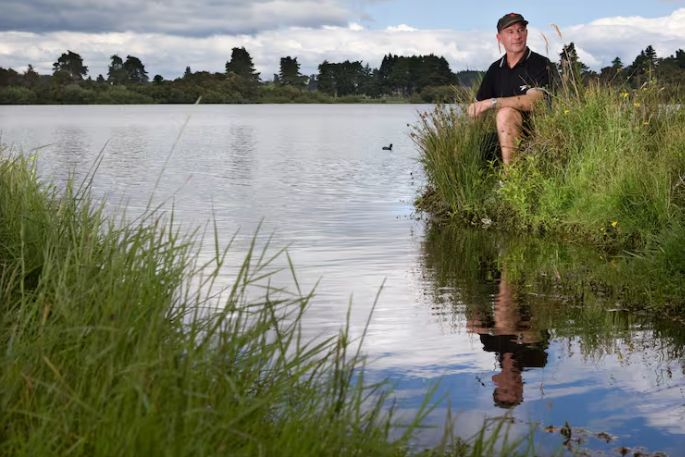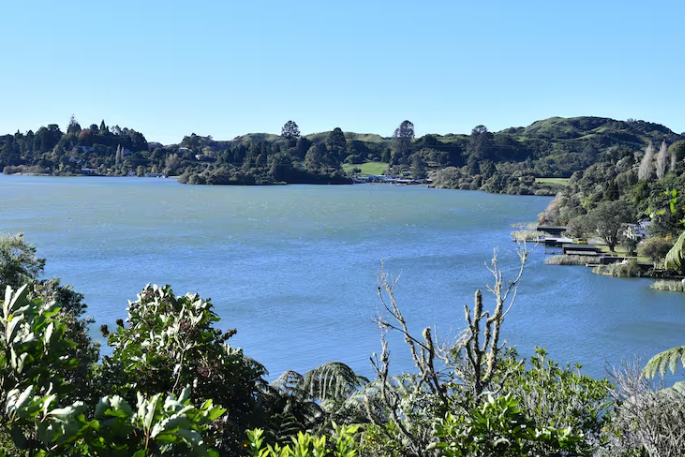A lake described as a “national treasure” faces environmental “disaster” if a lake wall is not fixed, advocates warn.
The Ōhau diversion wall, which stretches across 1.3 kilometres, aims to improve the water quality in Lake Rotoiti by stopping nutrients flowing in from Lake Rotorua.
But holes are appearing in the wall near the water’s surface.
After successive seasons of green water appearing in Lake Rotoiti, a group advocating to urgently fix the wall presented their case to the Bay of Plenty Regional Council on Wednesday as a submission to its draft Long-term Plan.
The $11 million diversion wall was built in 2008 and was expected to last 50 years but first showed signs of deterioration in 2014.
Don Atkinson, who owns a property at Lake Rotoiti, told Local Democracy Reporting after the hearing he had contacted the council to find out what was planned, when the work would be carried out, and how much money would be put towards it.
He says he was told $1.6m was planned for the 2025/26 year to place material over the holes that appeared to be allowing poorer-quality water from Lake Rotorua to flow through.
Don, along with local retired structural engineer Geoff Dainty and Lakes Water Quality Society chairman John Gifford, urged elected members to bring the work forward a year and suggested $10m be put aside for a complete repair.
Don told the hearing they considered the planned fix a “sticking plaster”.
Lake Rotoiti was considered a “gem” but was “rapidly returning” to its prior state before the wall was built, when annual algal blooms prompted health warnings, property values dipped and the lake was in a degraded state, Don says.
In his opinion: “It is an absolute disgrace we have infrastructure that has failed.”
Rotoiti was on the verge of lake-wide blooms, he says, and he believed it was “heading for disaster”.
Don, Geoff and John say in their view the council had failed by allowing it to happen.
Geoff says urgent temporary repairs were needed to allow time for the council to explore the root cause of the corrosion causing the holes.
 Water at the Okere Inlet at Lake Rotoiti was the colour of the trees surrounding it in March 2023. Photo / Laura Smith.
Water at the Okere Inlet at Lake Rotoiti was the colour of the trees surrounding it in March 2023. Photo / Laura Smith.
This would help determine the life expectancy of the king piles anchoring the wall to the lakebed.
It should then redesign and repair the wall, he says.
“The environment around there has caused the corrosion to be five times faster than what it was designed for.”
John told councillors the society was “incredibly disappointed” repairs were not immediate within the draft plan.
 Lakes Water Quality Society chairman John Gifford at Lake Rotorua. Photo / Laura Smith.
Lakes Water Quality Society chairman John Gifford at Lake Rotorua. Photo / Laura Smith.
He says it also recommended an urgent independent review on the wall’s “fitness for purpose” for the next 30 years.
The way the two lakes intersected was complex, he says, and while the impact of blooms in the warmer months was evident, the impact of bacteria during the cooler months was unclear.
“Until we have some evidence and information about the impact of nutrients, bacteria, algal assemblage and suspended solids moving into Lake Rotoiti there has to be urgency about making those repairs.”
Councillor Malcolm Campbell echoed their concerns.
“This is a national treasure. It’s going to turn back into … the shithole it was 10, 15 years ago.”
He did not believe the financial burden should be placed on those living around the lake, because it was widely used for recreational purposes.
Regional councillor Kevin Winters was Rotorua mayor when the wall was originally built.
 Bay of Plenty Regional councillor Kevin Winters. Photo / Andrew Warner.
Bay of Plenty Regional councillor Kevin Winters. Photo / Andrew Warner.
“I’m not an engineer. You rely on the best specs at the time when you award these contracts.
“Hell, I didn’t know it was going to rot out in 10 years.”
He was unconvinced by the council’s proposed fix and agreed with those calling it a “sticking plaster” solution.
Lakes operations manager Andy Bruere told Local Democracy Reporting after the hearing the council was committed to repairing the wall.
 Bay of Plenty Regional Council lakes operations manager Andy Bruere. Photo / Stephen Parker.
Bay of Plenty Regional Council lakes operations manager Andy Bruere. Photo / Stephen Parker.
Different repair methods had been trialled in the past year, he says.
This included using polyethylene sheets of varying thicknesses to cover the holes, which were mostly appearing close to the water’s surface.
He says the trials produced a clearer idea of what performed well.
“The main goal is to fix it and not have another problem on our hands.”
He says if its method was approved there was an opportunity to bring the repair work forward.
Three-yearly inspections were undertaken and repairs had included $1m spent on strengthening the king piles.
Andy says holes bigger than 400mm by 250mm needed to be fixed.
Laura Smith is a Local Democracy Reporting journalist based at the Rotorua Daily Post. She previously reported general news for the Otago Daily Times and Southland Express, and has been a journalist for four years.
LDR is local body journalism co-funded by RNZ and NZ On Air.




0 comments
Leave a Comment
You must be logged in to make a comment.